Suirville
Houses within 10km of this house
Displaying 66 houses.
Houses within 10km of Suirville
Displaying 66 houses.
| House name | Description | |
|---|---|---|
| Bansha Castle | The home of the O'Brien Butlers in the 18th century. In 1786 Wilson refers to Bansha as the seat of Mr.O'Brien. The residence of the O'Ryan family in the first half of the 19th century, occupied by Andrew O'Ryan in 1814 and Edmund O'Ryan in 1837. John Chaytor was resident fromn 1840 and into the early 1850s holding the buildings valued at £25 from Edmund O'Ryan. This property was advertised for sale in the early 1860s. The rental of 1866 describes this residence as containing " Four spacious reception rooms, six well ventilated bed rooms, bath room and servant's dormitory". In the 1870s Major John Lutman of Bansha Castle, who was married to an O'Ryan, owned 485 acres in county Tipperary and 94 acres in county Limerick. Bansha Castle was the home of Sir William Francis Butler in the early 20th century. The Russell family now offer luxury accommodation at Bansha Castle. see http://www.banshacastle.com/index.html |

|
| Lismacue | The seat of the Baker family in the 18th and 19th centuries, Lismacue was referred to by Wilson as the seat of Mr. Baker in 1786. It was occupied by William Baker in 1814 and by his nephew, Hugh Baker in 1837 when Lewis describes the house as a "handsome castellated mansion". The Ordnance Survey Name Books describe it as "lately erected...the property of John Charters" in 1840. The house was valued at £55 at the time of Griffith's Valuation. This property is still in the possession of a family member and may be rented for country vacations. http://www.lismacue.com/index.htm |

|
| Thomastown Castle | The original building was a two storey house of pink brick built in the 1670s by George Mathew with early 18th additions. Wilson decribed it in 1786 as "an ancient but handsome edifice". In the second decade of the 19th century it was enlarged and transformed into a Gothic castle, designed by Richard Morrison for the 2nd Earl of Llandaff. Viscount Chabot is recorded as the occupier in the mid 19th century. He held the property in fee and the buildings were valued at £100. Bence Jones writes that it later was in the possession of the Daly family but from the mid 1870s it began to decay. William Daly was the occupier in 1906 when the buildings were valued at £61. |
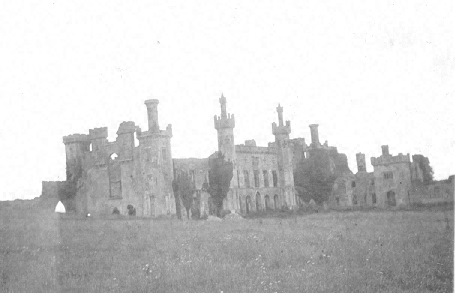
|
| Cottage (Caher) | The residence of George Fennell from 1814 until at least the mid 19th century, when it was valued at £22+ and held from Mrs Rachel Haughton. A building is still located at this site. | |
| Caherabbey House | Occupied by John Fennell in 1814 and by Richard Grubb in 1837. Montgomery records that Richard Grubb built a house at Cahirabbey circa 1833. Richard Grubb held the property in fee at the time of Griffith's Valuation when the buildings were valued at £70. He also had a flour mill closeby valued at £200. In 1894 Slater notes it as the seat of Rev. George Grubb. This house continues to be a family home. In 2013 it was offered for sale. |
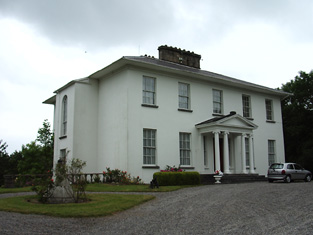
|
| Caherabbey House Upper | Joshua Fennell occupied a house known as Caher-abbey-villa in 1814 and in the early 1850s Joshua Fennell (Joseph) was occupying a house in Caherabbey Upper, valued at £29 and held from Ponsonby Barker. | |
| Alta Villa | The home of a branch of the Going family for much of the 19th century. Charles Going was resident in 1814, William Going in 1837. The Ordnance Survey Name Books describe it as "of modern structure in good repair" in 1840. William Going was also the occupier at the time of Griffith's Valuation when the house was valued at £22+ and his flour mill at £66. The property was held from the representatives of Dunbar Barton. Alexander Going of Alta Villa owned 313 acres in county Tipperary in the 1870s. Sir T. Warren lived at Alta Villa, Cahir in the mid 20th century. Alta Villa is still extant and occupied. |
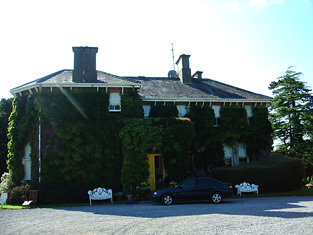
|
| Keylong | In 1786 Wilson refers to this house as the seat of Mr. Butler. Key-long was the residence of Richard Butler in 1814 and in the early 1850s Richard Carew was the occupier, holding the house valued at £12 from Thomas Going. This house is still a family residence. |
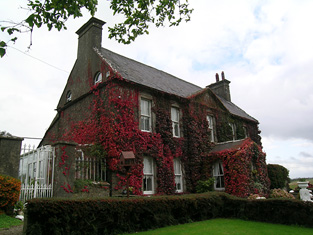
|
| Killemly Lodge | In 1837 the proprietor of Killemly Hall was H. Hughes but it was occupied by L. Clutterbuck. The Ordnance Survey Name Books also note it as his residence in 1840. The house was vacant in the early 1850s, valued at £9.15 shillings and held by Thomas Going from Mrs Catherine Sarsfield. There was a small corn mill nearby. A house is still extant at this location. | |
| Rockwell | Wilson refers to Rockwell as the seat of Andrew Roe in 1786. In 1814 and 1837 John Rowe/Roe was living at Rockwell. By the time of Griffith's Valuation John Bushe was the occupant, holding the property from the Court of Chancery. The buildings were valued at £40.16 shillings. John Bushe was the resident in May 1856 when the estate was advertised for sale. The buildings were altered and added too in 1865 after the arrival of the Holy Ghost Fathers who started a school. This school still operates as one of Ireland's well known boarding school. http://www.rockwellcollege.ie/missionstatement.html |
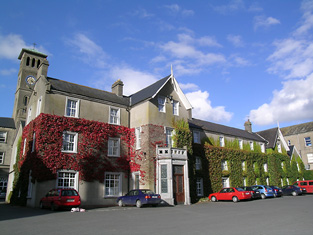
|
| Boytonrath | T. O'Meagher was the proprietor of Boytonrath in 1814. The Ordnance Survey Name Books refer to Richard Anderson as the occupant in 1840. In the early 1850s Henry Andrews was the occupier holding the property from the representatives of William Roe. The buildings were valued at £12+. A house and farm are still extant at the site. | |
| Belle Vue | Belle Vue house situated in Belle Vue Park in the townland of Boytonrath was occupied by Andrew Roe in 1814 and by George Roe in 1850. The buildings were valued at £9.15 shillings. The house has been altered over the years and is still the centre of a working farm. |
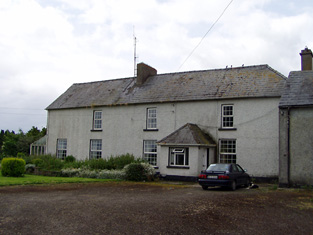
|
| Ballinamona | Ballinamona was the home of the Murphy family in the 19th century, occupied by William Murphy in 1814 and in 1850. The buildings were valued at £21.15 shillings and held in fee. Edmund William Murphy was resident in 1906. |

|
| Deerpark | This house valued at £34.12 shillings was occupied by John Hare and held from the representatives of - Wyse in the mid 19th century. The National Inventory of Architectural Heritage survey indicates it was built around 1850. It is still extant. |
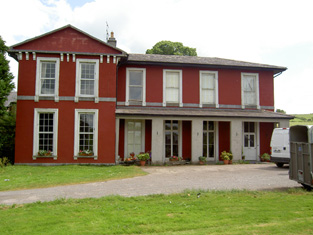
|
| Loughkent | Nicholas Dogherty is recorded as the occupier of Loughkent House in 1814 and in 1850, when he held the house valued at £12.18 shillings from Arthur Riall. It is no longer extant. | |
| Garranlea | A Keating home from the 18th century, occupied by Leonard Keating in the first half of the 19th century. In 1800 Leonard Keating married Lucinda Scully of Kilfeacle. Their son, Robert, was Member of Parliament for county Waterford in the late 1840s. In 1850 he held the property from the Earl of Clonmel and the buildings were valued at £34+. This house no longer exists. | |
| Marlhill | Edward O'Meagher was the occupier of Marlhill in 1814. The Ordnance Survey Name Books mention Marlhill as the residence of J. O'Meaghar in 1840. Thadeus O'Meagher was the occupier in 1850. Thadeus held the house and 120 acres from Stephen O'Meagher and the buildings were valued at £22+. Buildings still exist at this site. | |
| Castlelake Cottage | Major M. Lidwell was resident at Castlelake, Cashel, in 1814. In 1837 Lewis records a distillery and the neat residence of Thomas Mathew. The Ordnance Survey Name Books refer to it as being occupied by Mathew Gilbert in 1840. These buildings appear to be in the possession of the Poor Law Commissioners at the time of Griffith's Valuation, valued at £40+ and held from General Hall. The buildings no longer exist. [In 1786 Wilson may be referring to this property when he note a seat of Mr. Burke at Castlelake]. | |
| Rock View | Rock View, Cashel, was occupied by John Lane in 1814, by Sam Cooper in 1837 and by Mrs Margaret Matthews in the early 1850s. The buildings were valued at £18.16 shillings and held from General Hall. This house, located close to the road between Golden and Cashel, is still occupied. |
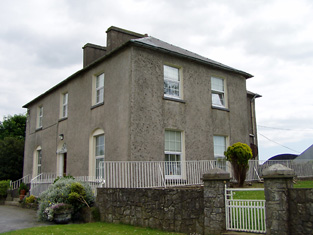
|
| Racecourse Hall | Lewis records Avary Jordan as the proprietor of Race-Course Lodge in 1837. The house was valued at £35 in the mid 19th century, occupied by Avary Jordan and held from the Cashel Commissioners. Mrs Jordan of Racecourse owned 3 acres in the 1870s. This house, located just south of the town of Cashel, still survives as a fine country residence. |
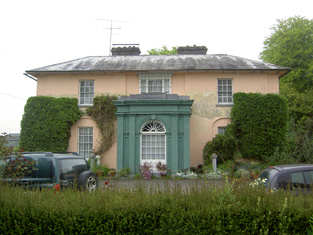
|
| Ballygriffen | Taylor and Skinner record the Earl of Clanwilliam as proprietor of Ballygrifffin, Golden, in the 1770s. In 1786 Wilson refers to two properties owned by the Earl in this area "on the left of Golden is Lisheen, a seat sometimes occupied by the Earl of Clanwiliam, contiguous to which is Ballygrifin, where his lordship has a very fine range of stables and other offices". The house now at Ballygriffin is a mid 19th century house incorporating the remains of a a tower house. Occupied by Edmond [Edward] Dalton in the mid 19th century when the buildings were valued at £16.10 shillings and held from Charles Bianconi. Edward Dalton's son John Edward Dalton of Golden Hills owned 161 acres in the 1870s. |

|
| Ballynahinch | A house valued at £14, occupied by Denis Heany and held from Richard B. H. Lowe at the time of Griffith's Valuation. This house is still extant and the centre of a working farm. |

|
| Lisheen | In 1786 Wilson writes that Lisheen was a seat sometimes occupied by the Earl of Clanwiliam. It became the seat of the Fitzgeralds, Baronets, in the 19th century, valued at £33 in the 1850s and held from the Earl of Portarlington. Edward Dalton was the tenant at the time of the sale of the Earl of Portarlington's estates in June 1856. A building is still located at this site. | |
| Cordangan House | Cordangan was a Cooke family residence in the 18th and 19th centuries, occupied by John Cooke in 1814. The Ordnance Survey Name Books refer to it as being "in very good repair, the residence of J. Cooke". in the early 1850s it was occupied by Thomas Cooke. The property was held from the Smith Barry estate and the buildings were valued at £26. Slater refers to it as the residence of Horatio Townsend in 1894. In 1906 it was in the possession of Lord Barrymore and valued at £53. It is still extant. |

|
| Grantstown Hall | The present house is not marked on the first Ordnance Survey map circa 1840. A house in this townland, valued at £10.10 shillings at the time of Griffith's Valuation, was occupied by Charles Massy who held it from [his brother] Henry W. Massy. In 1894 Slater noted it as the seat of Gen. William Massy. The Massys continue to live at Grantstown until at least 1906. Still extant and occupied. |

|
| Bansha House | Bansha House is marked on the first edition Ordnance Survey Map circa 1840. It was the home of Robert Clarke, fourth son of the Reverend Marshal Clarke, in 1837. John Vincent occupied a house valued at £20 in this townland at the time of Griffith's Valuation. He held it from Richard Butler. The National Inventory of Architectural Heritage dates this house from about 1880. It now functions as a guest house. http://www.tipp.ie/banshahs.htm |

|
| Kilfeakle | A home of the Bunbury family in the mid 18th century and later of the Scully family. James Scully was resident at Kilfeacle in 1814. Mrs Scully, [widow of Denys Scully, son of James], was the occupier in 1837 and her fourth son Thomas was resident at the time of Griffith's Valuation. He held the property from the representatives of B. Bunbury. By the early 20th century Kilfeakle House was in ruins. | |
| Mountwilliam | This house was a Bunbury home in the late 18th century. Wilson refers to Mount-William as the seat of Mr. Bunbury in 1786. Jeremiah Scully was living at Mount-william in 1814. James Mahon was resident in 1837 and Denis Dwyer in the early 1850s. The property was held from the representatives of Benjamin Bunbury and the house was valued at £14. This house no longer exists. | |
| Ballydrehid | In 1786 Wilson refers to Ballydrehid as a seat of Viscount Lismore, "pleasantly situated on rising ground". The home of Robert Keating in 1814 and of Robert Doherty in the early 1850s. Doherty held the property from Viscount Lismore and the house was valued at £17. This house is still extant and occupied. |

|
| Kilmoyler | A late 18th century house, the seat of the O'Meagher family, occupied by Dennis O'Meagher in 1814 and 1837 and by Stephen O'Meagher at the time of Griffith's Valuatiton. He held the property in fee and the buildings were valued at £40. In 1865 this property was advertised for sale by the Prestons. The rental records that the house was held on a lease dated 1860 from William O'Meagher to Standish Butler who was resident at the time. In 1786 Wilson had recorded "the castle and house at Kilmoyler, the ancient seat of Colonel Butler". Still extant and occupied. |

|
| Kilshane/Arraghslea | Kilshane Cottage was occupied by Captain Blackmore in 1837 and noted by the Ordnance Survey Name Books as "the residence of Captain Blackmore, in excellent repair" in 1840. It was occupied by Henry Blackmore in the mid 19th century, when the house was valued at £11 and held from Simon Lowe. The Blackmores were related to the Lowes. This building is named Kilshane on the first edition Ordnance Survey map. Buildings in Kilshane valued at £12 were still in the possession of the Lowe family in 1906. This house later became known as Arraghslea and following a townland boundary change was located in the townland of Springhouse. |

|
| Kilshane/ Spring House | It is not clear where the McCarthy house at Springhouse was located but a building is marked on the first edition Ordnance Survey map as Spring House, later known as Kilshane. In 1786 Wilson refers to Spring House as the seat of Mr. McCathy. Thomas McCarthy resided at Springhouse in 1814. The present house was built in the 1820s by John Lowe and was designed by C. F. Anderson. It continued to be the home of the Lowe family throughout the 19th century. Lewis refers to Spring House the residence of J. Low. Simon Low held the property in fee at the time of Griffith's Valuation when the house was valued at £75. The Lowes were still resident in 1906. This house was renovated and restored in the early 21st century and now functions as a hotel. see http://www.kilshanehouse.ie/Contact.html |

|
| Lacken | John Smithwick was resident at Lacken in 1837 and by George Smithwick in the early 1850s and held from Miss Mary Sadlier. The buildings were valued at £11. A house is still extant at the site. | |
| Ballinaclogh | A house occupied by William Scully and held by him in fee at the time of Griffith's Valuation. The buildings were valued at £11. William Scully (born 1821) of Ballinaclough was the fifth son of Denys Scully of Kilfeakle. He owned 1,354 acres in county Tipperary in the 1870s. Occupied by T.A. Scully in 1906 and valued at £16. | |
| Castlepark House/ Mantle Hill | In 1786 Wilson refers to the seat of Mr. Alleyn on the left at the entrance to Golden. He may be referring to the early house at this site, shown as Castlepark House on the first edition Ordnance Survey map. By the early nineteenth century it was the home of the Creagh family. Richard Creagh was resident in 1814 and 1837 and Lawrence Creagh held the property from Kingsmill Pennefather at the time of Griffith's Valuation. The buildings were valued at £65. Later bought by the Scullys, when it became known as Mantle Hill. Occupied by Vincent Scully in 1906. The house is no longer extant. |
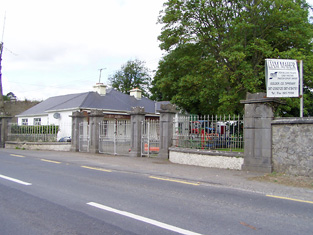
|
| Ballycarron | The Butlers are described as "of Ballycarron" from the early 18th century. Ballycarron was the residence of Thomas Butler in the 19th century, held from Michael Gavin in the 1850s when the buildings were valued at £36. ''Burke's Irish Family Records'' states that the proceeds of the sale of the Ballycarron estate and the house itself were bequeathed "to the Church". This building is now divided into residential apartments. | |
| Ballyslatteen | Richard Butler, a younger brother of Thomas Butler of Ballycarron, was resident at Ballyslatteen in 1837 and at the time of Griffith's Valuation. He held the property from the Honourable John Massey and the buildings were valued at £20. Included in the sale of the Earl of Portarlington's estates in June 1856. A building is still located at this site. | |
| Suir Castle House | Suir Castle was the home of a branch of the Massy family in the latter part of the 18th century. Two buildings are marked on the first edition Ordnance Survey map Suir Castle and Suir Castle House. The Inventory of National Architectural Heritage dates the house from circa 1820. Suir Castle [Grid Ref. S004 352] was occupied by Joseph Robbins in 1814 and in 1837. In the mid 19th century Suir Castle House was held by Francis Massey in fee and the buildings were valued at £21. The Massys were still resident in the 1870s. Occupied in the 20th century by Major Harold O'Malley. For sale in 2003. |

|
| Hymenstown | This house was the home of the Robbins family in the 18th and 19th centuries. Occupied by George Robbins in 1814 and by R. Scully in 1837. Michael Cleary was resident at the time of Griffith's Valuation holding the property from Nathaniel E. Robbins, when the buildings were valued at £20. Included in the sale of the Earl of Portarlington's estates in June 1856. John Graham was living at Hymenstown in the 1870s. This house is still extant. |
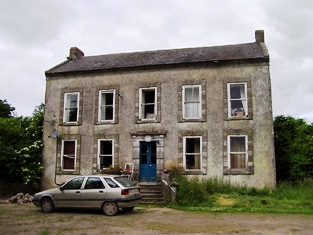
|
| Golden Hills | Leet records Henry White as the proprietor of Goldenville, Golden, in 1814. In 1837 Lewis refers to Golden Hills as the "castellated residence of H. White". Edmond [Edward] Dalton occupied this house in the early 1850s holding it from Henry White. It was valued at £25. By 1858 Thomas Judkin Fitzgerald was occupying Golden Hills or Golden Lodge which was advertised for sale in January 1858 and again in April 1878. In 1878 Golden Hills was described as a "large castellated building" with a drawing room opening into a conservatory, dining room and morning room, 8 bedrooms and a servants' hall. The Irish Tourist Association surveyor records that it was the residence of Thomas Judkin Fitzgerald, High Sheriff of county Tipperary in 1798, known as "Flogging Fitzgerald". In the early 1940s most of the house had disappeared or was incorporated into a modern farmyard. |

|
| Spring Mount | J. White was living at Spring Mount in 1837 and at the time of Griffith's Valuation Robert W. White was the occupier, holding the property from William Scully. The house was valued at £17. The Whites were still occupying Spring Mount in the 1870s. |

|
| Athassel | James Scully was occupying this house at the time of Griffith's Valuation. He held it from Richard Creagh and the buildings were valued at £30. This house is still a residence. |
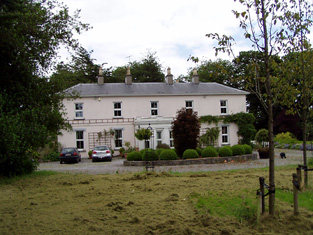
|
| Rathcloheen | Rathcloheen was the home of John Mathew in the first half of the 19th century. The house is situated very close to Thomastown Castle. At the time of Griffith's Valuation John Mathew held Rathcloheen from Lynn Carew and the buildings were valued at £20. "Burke's Irish Family Records" refers to John Smithwick of Rathclogheen, county Tipperary who married Cherry Pennefather in 1823. This house is well preserved and is still used as a residence. |

|
| Barnlough | This house was a Smithwick family home in the 18th and early part of the 19th centuries, occupied by Thomas Smythwick in 1814 and by P. Smithwick in 1837. Barnlough was held by the Earl of Portarlington in fee at the time of Griffith's Valuation, when the buildings were valued at £11.10 shillings. It is no longer extant. | |
| Toureen | The first edition Ordnance Survey map marks Toureen House, later maps show a house located a short distance to the south west. Leet and Lewis records Denis O'Meagher as resident at Toureen. This may be the dairy house and offices recorded in Griffith's Valuation and valued at £3.5 shillings held by Stephen O'Meagher in fee. The 25-inch map of the 1890s indicates Tooreen House and a house and substantial farm are still extant at this site. | |
| Toureen Wood House | This house located on the northern fringe of Toureen wood was the home of Philip Maguire in the second half of the 19th century. The site of this house is located near a building marked on the first edition Ordnance Survey map as Maguire's Castle. The sale rental of 1875 refers to a new and comfortable dwelling house on the lands of Toureen, containing 2 good reception rooms, 7 bedrooms. a large kitchen and store room, dairy and pantries. The house was in the owner's possession. A house in the townland of Toureen valued at £7.5 shillings was held in fee by Philip Maguire in the mid 19th century. Lewis records a house known as Kilmoylermore, the residence of "the late Constantine Maguire, Esq." | |
| Ashgrove | In 1786 Wilson refers to Ashgrove as the seat of Mr. Ash. At the time of Griffith's Valuation Ashgrove House was valued at £14.10 shillings and occupied by John Henry Ashe who held it from his brother Trevor Lloyd Ashe. A lithograph of Ashgrove is included in the Ashe sale rental of 1854. It was bought by Charles Moore of Mooresfort. Ashgrove was offered for sale again in 1864. It was held on a lease dated 1815 from Trevor Lloyd Ashe to Southwell Moore for 3 lives renewable for ever. Lyons writes that Southwell Mulcahy was resident from 1858. This house is still in use as a residence. |

|
| Castle Mary | Lewis describes Ashgrove Castle or Castle Mary, the residence of the Reverend Trevor Lloyd Ashe, Lord of the Manor of Bansha, as a "castellated mansion in the Italian style of architecture, situated at the base of the Galtee mountains, 4,000 acres of which are attached to the estate". This house is marked on the first edition Ordnance Survey map. In 1840 the Ordnance Survey Name Books refer to it as the property of T.L. Ashe "of modern construction but in very bad repair". It is recorded as "in ruins" in the later 25 inch map of the 1890s. Land clearance has taken place in the area and nothing remains of Castle Mary. | |
| Ballydavid | G. Baker was resident at Ballydavid in 1837 and in the early 1850s when the house was valued at £13.10 shillings and held from the Reverend George Cole Baker. In 1786 Wilson refers to Ballydavid as the seat of Mr. Baker. In 1840 the Ordnance Survey Name Books had noted that the house was in bad repair though the demesne was described as "neatly ornamented". This house no longer exists. | |
| Kilmore | The National Inventory of Architectural Heritage dates this house from the early to mid 18th century and the Wayland family were resident at this time. Austin Cooper was living at Kilmore in 1837 and at the time of Griffith's Valuation Samuel Cooper was the occupier. He held Kilmore from the Earl of Normanstown and the buildings were valued at £16. This house is still occupied and part of a working farm. |

|
| Killenure Castle | Leet records Samuel Cooper as the proprietor of Killenure in 1814 and Lewis in 1837 as the "seat of William Cooper". At the time of Griffith's Valuation William Cooper held the property in fee and the house was valued at £31.10 shillings. The Coopers were still resident at Killenure in the early 20th century. As its webiste suggests "It has been a fortified home with sturdy towers, a'hunting box', a country house for a large family, a busy productive farm with stables and coach house, a boarding school and even a meditation centre". It will be open to the public from Summer 2012. See htp://killenure.com. |
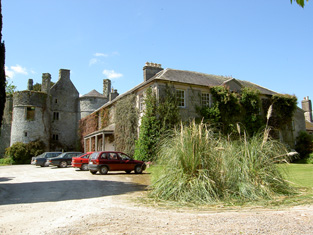
|
| Ballywalter | F. V. Wayland was resident at Ballywalter in 1837. Francis Wayland of Ballywalter was murdered in 1838 on his way to a fair. William Weyland was living at Ballywalter in the mid 19th century, when the house was held from William Cooper and valued at £12.5 shillings. The Waylands and Coopers were related. This 18th century house is still in use as a family residence. |
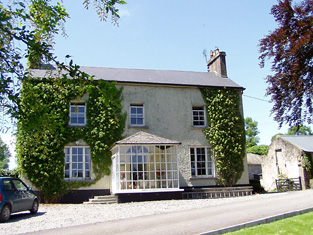
|
| Aherlow Castle | This early 19th century building was the residence of James A. Butler in the 1830s. In 1840 the Ordnance Survey Name Books note that it was the residence of the parish priest of Templeneiry. The Reverend William Kane was resident in the early 1850s when the buildings were valued at £9.15 shillings and held from James A. Butler. Aherlow Castle was later the property of the Moores of Mooresfort. Count Charles Moore was the occupier in 1906 when the buildings were valued at £20. It is now a ruin. |

|
| Brittas House | Built in the late 19th century by James O'Heney/Heney of Cashel and valued at £25 in 1906. Brittas House is now a stud farm belonging to Peter Magnier. | |
| Cluen House | An 18th century house originally known as Mount Kennedy. This house valued at £15 was being used as an auxiliary workhouse in the mid 19th century. It was held by John Kennedy from Thomas Slattery. In 1906 Lord Barrymore is recorded as the occupier and the building were valued at £28+. |

|
| Camus | A house occupied by James Chadwick and held from the representatives of Eustin [Austin] Cooper at the time of Griffith's Valuation. The buildings were valued at £28.18 shillings. |
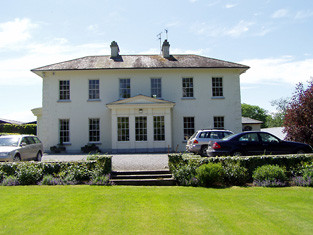
|
| Drangan | In the mid 19th century Daniel Heffernan held buildings valued at £15 from the Earl of Lismore at Drangan Beg. Drangan House is marked on both the first and 25-inch edition Ordnance Survey maps. A house and large farm are now located at the site. | |
| Castle View | A house valued at £10 was occupied by Edmond Dalton in the mid 19th century. It was held from Colonel William Dickson. A building is marked on the first edition Ordnance Survey map at this location. A larger building on later maps is named Castle View. Buildings are still extant at the site. | |
| Cahervillahowe | A house built post Griffith's Valuation by the Massy family. Cahervillahowe was sold to Mr Harris in the early 20th century. It is now a stud. |

|
| Athasselabbey | A house occupied by William Dalton and held from Francis Green in the mid 19th century. The house was valued at £12+. It is still occupied. |

|
| Mount Judkin House | In 1786 Wilson refers to the seat of Mr. Judkin, located half a mile byond Cashel on the right. At the time of Griffith's Valuation, the townland was leased by Richard Jordan to Edmund Cusack and the house was valued at almost £8. Buildings are still extant at the site. | |
| Cappagh (Clanwilliam) | In 1786 Wilson refers to Cappagh as the seat of Mr. Massey. At the time of Griffith's Valuation, this townland was the property of estate of Reverend John Massey Dawson. [Grid Reference is approximate]. | |
| Ballymorris | In 1786 Wilson refers to Ballymorris as the seat of Mr. Magher. By the time of Griffith's Valuation the townland was held by Stephen O'Meagher and the buildings were valued at £1. The house appears to be gone by the time the first Ordnance Survey map was published as it is not shown there. | |
| Rosemount (Caher) | In 1840 the Ordnance Survey Name Books refer to Rosemount as a house in good repair, the residence of Robert Franklin. He is also listed as the occupier at the time of Griffith's Valuation, leasing from the Barton estate when the buildings had a valuation of £10. Robert Franklin of Rosemount is listed in Slater's Directory of 1846. The house is no longer extant. | |
| Lissava House | In 1840 the Ordnance Survey Name Books refer to Lissava House as the residence of John Egan. He was recorded among the gentry of Caher in Slater's Directory 1846. He also the occupier in the early 1850s when he was leasing it from the Earl of Glengall's estate. The buildings were valued at £12. A house is still extant at the site. | |
| Hymenstown House | Hymenstown House is shown on the 25-inch Ordnance Survey map of the 1890s. The National Inventory of Architectural Heritage suggests it was built sometime in the 1860s. The house on the site at the time of Griffith's Valuation was owned by Nathaniel Robbins and valued at under £2. In 1901 it appears to have been the property of Alex Going but was vacant at the time. Hymenstown House is still extant and occupied. |
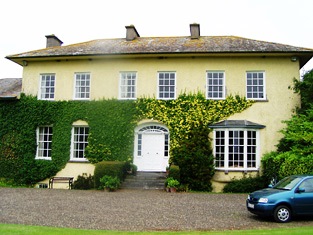
|

